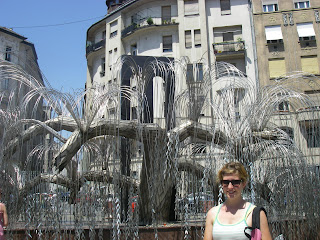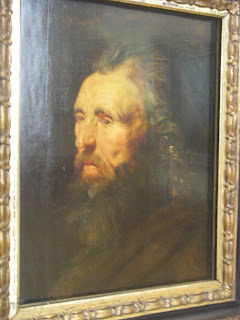Hungarian Parliament. Budapest was united from three cities in 1873 and seven years later the National Assembly resolved to establish a new, representative Parliament Building, expressing the sovereignty of the nation. A competition was published, which was won by Imre Steindl, but the plans of the other two competitors were also realized, facing the Parliament: one serves today as the Ethnographical Museum, the other as the Ministry of Agriculture. Construction from the winning plan was started in 1885 and the building was inaugurated on the 1000th anniversary of the country in 1896, and completed in 1904. (The architect of the building went blind before its complection.) There were about one thousand people working on its construction in which 40 million bricks, half a million precious stones and 40 kg gold were used.
Hungarian Parliament Building - Similar to the Palace of Westminster, it was built in Gothic Revival style; it has a symmetrical facade and a central dome. It is one of the tallest buildings in Budapest, along with Saint Stephen's Basilica. The number 96 refers to the nation's millennium, 1896, and the conquest of the later Kingdom of Hungary in 896. When entering the Parliament, the visitor can walk up great ornamental stairs, see frescoes on the ceiling and pass by the bust of the creator, Imre Steindl, in a wall niche. During the Communist regime, the government added a large red star to the central steeple at the dome of the building, but after its downfall, the star was removed from the steeple.










Museum of Fine Arts - (13th to 18th centuries). The 3000 paintings in the collection offer an almost uninterrupted survey of the development of European painting from the 13th to the late 18th centuries. The core of the collection is constituted by the 700 paintings acquired from the Esterhazy estate. The collection is split up into Italian, German, Netherlandish, Flemish, French, English and Spanish art. The most important works include Maso di Banco's Coronation of the Virgin, Sassetta's Saint Thomas Aquinas at Prayer, Domenico Ghirlandaio's Saint Stephen Martyr, Gentile Bellini's Portrait of Caterina Cornaro, Giorgione's Portrait of a Young Man, Raphael's 'Esterhazy Madonna',Correggio's Madonna and Child with an Angel, three masterpieces by Sebastiano del Piombo, Bronzino's Adoration of the Shepherds as well as his Venus, Cupid and Jealousy, Tiepolo's St James the Greater in the Battle of Clavijo, Durer's Portrait of a Young Man, Bernard van Orley's Portrait of Emperor Charles V, eight pictures by Lucas Cranach the Elder, Pieter Bruegel the Elder's St John the Baptist Preaching, Rubens's Mucius Scaevola Before Porsenna, two excellent portraits by Frans Hals, and a particularly strong collection of works by Spanish maters including El Greco, Velasquez and Goya.





http://www.terrorhaza.hu/en/index_2.html There is no way to describe the House of Terror. You have to look at this website. No pictures were allowed. It graphically portrays what the Nazis did to the Hungarians and then what the Russians did to the Hungarians . . . in this very building - both regimes.









No comments:
Post a Comment